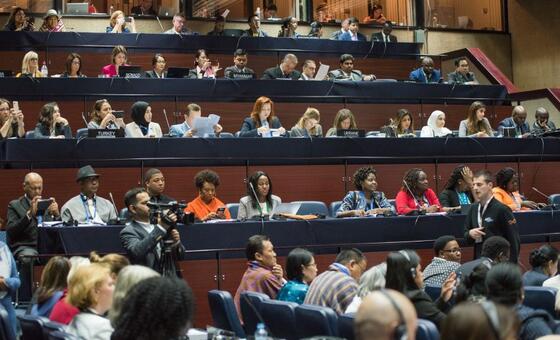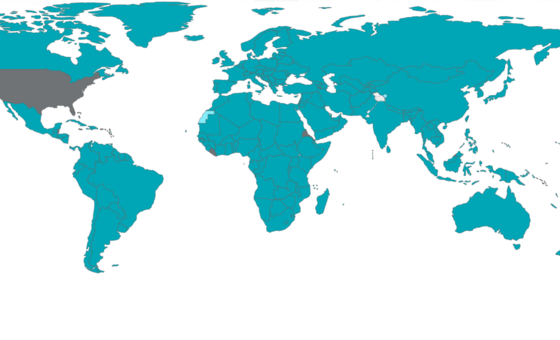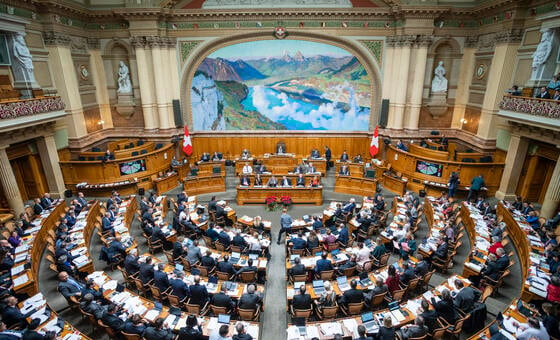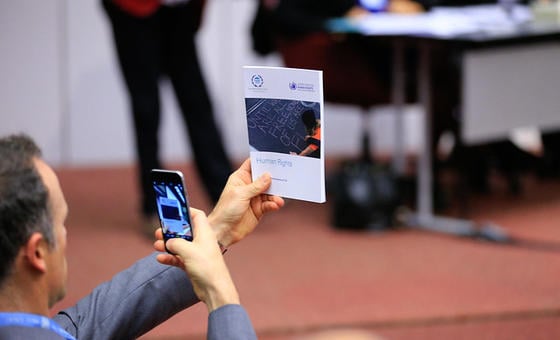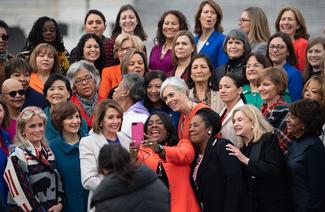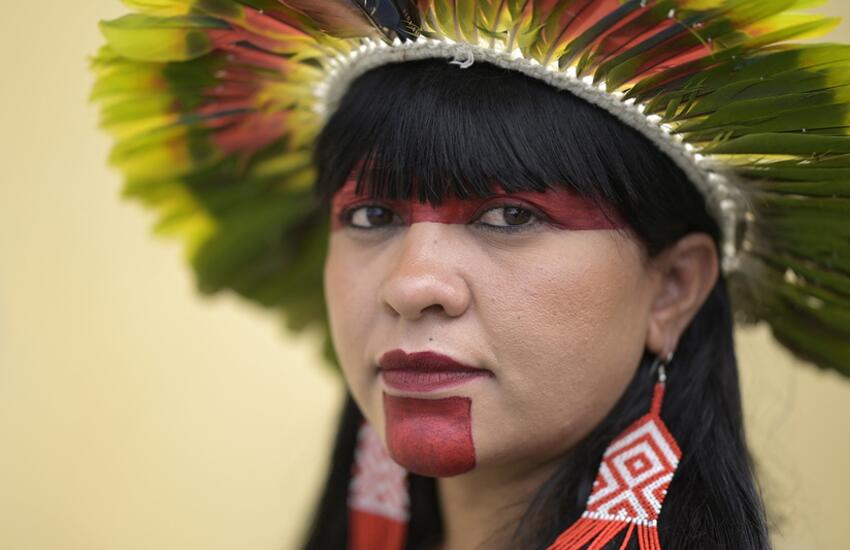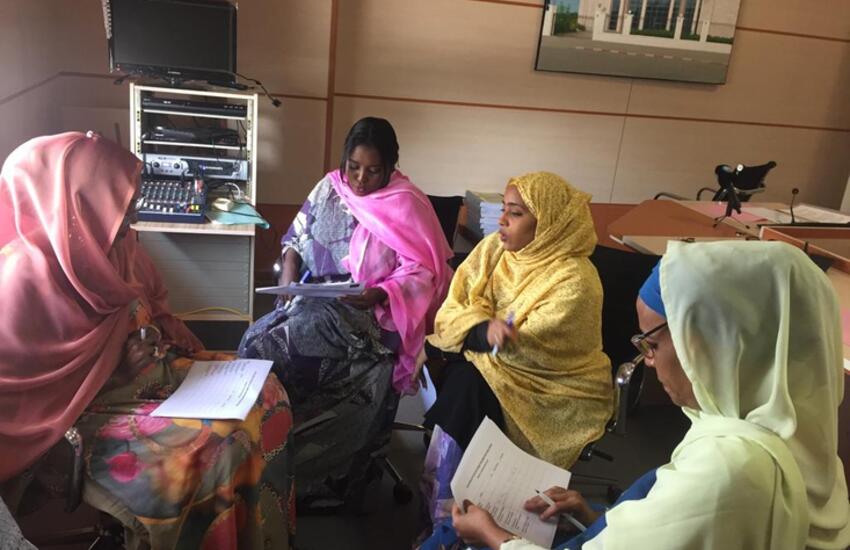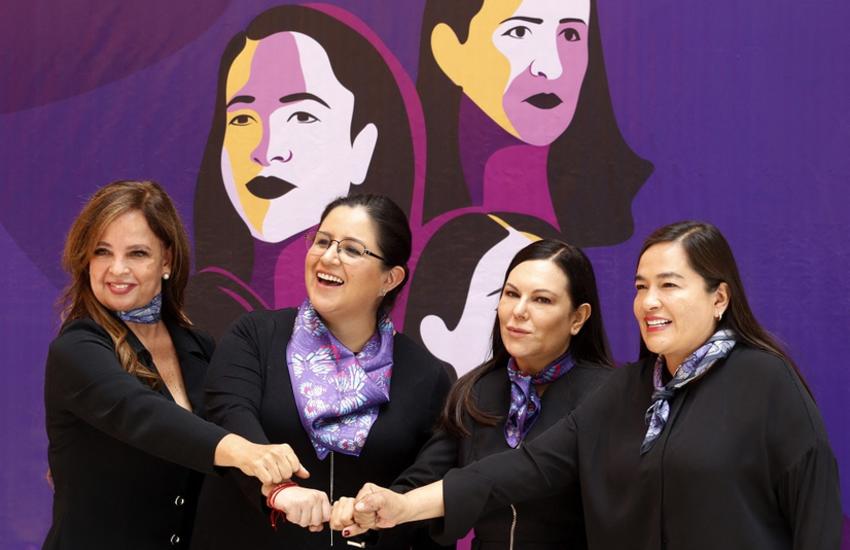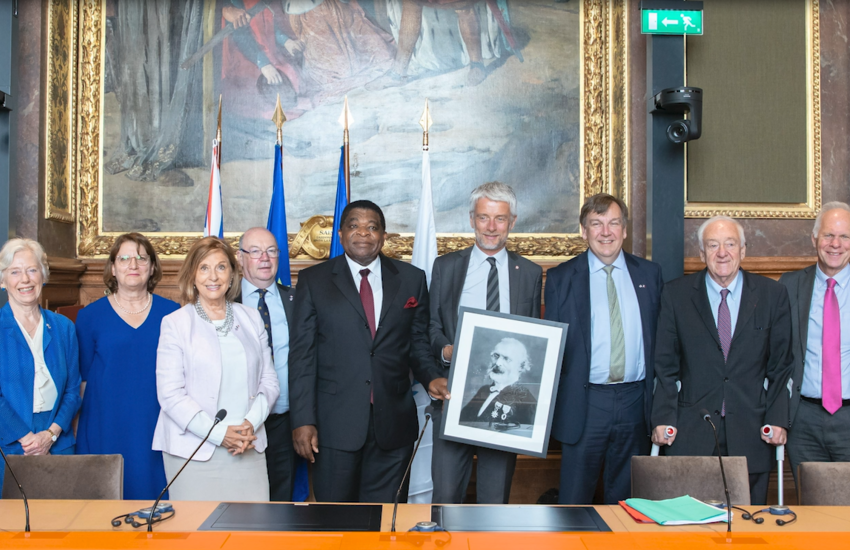According to the IPU’s yearly analysis, the share of women in national parliaments increased by nearly one percentage point last year, from 23.4 per cent in 2017 to 24.3 per cent in 2018. This 0.9 percentage point increase confirms the continuing rise of women in parliament, at a slightly faster rate of change compared to previous years. Countries with well-designed gender quotas elected significantly more women to parliament than those without, respectively, 7 points more in single or lower chambers, and 17 points more in upper chambers. (See also IPU-UN Women map, Women in Politics 2019.)
The IPU has been tracking women’s participation in parliament for decades, allowing it to monitor progress, setbacks and trends. This year’s report is based on 50 countries that held elections in 2018. IPU data confirms that the global share of women in parliament continues to rise, albeit slowly, when compared with 18.3 per cent of MPs who were women in 2008, and 11.3 per cent in 1995.
IPU President and Mexican MP, Gabriela Cuevas Barron said “More women in parliament mean better, stronger and more representative democracies that work for all the people. The one per cent increase we saw in 2018 represents a small improvement on women's parliamentary representation. This means we are still a long way to achieving global gender parity. For that reason, we urge for greater political will in adopting well-designed quotas and electoral systems that eliminate any legal barrier that might be hindering the opportunities for women to enter parliament.”
IPU Secretary General, Martin Chungong said “It’s encouraging to see that the tools that the IPU has been advocating for many years, such as well-designed and well-implemented gender quotas, are beginning to bear their fruit. The IPU, with our many years of experience in empowering women in parliament, is at the disposal of any parliament that wishes to achieve gender equality.”
Overall trends
The IPU report shows that electoral quotas for women have now spread to all regions of the world with more than 130 countries adopting quota policies. Evidence from elections held in 2018 demonstrates that well-designed quotas can pave the way to greater gender parity. In Latin America, many 30-per-cent policies originally adopted in the 1990s are being revised upwards to stipulate that party candidates should include equal numbers of women and men. The impact of these policies was seen clearly in 2018 in Costa Rica where the share of women MPs rose by 12.3 points; and in Mexico where the lower chamber gained 5.8 points and the upper chamber increased by 16.4 points. This brings both countries close to gender parity.
Country-level experiences with quotas, however, have shown that not all quotas are equally effective. In most cases, simply mandating quotas, without including placement mechanisms or sanctions, has failed to result in major breakthroughs in women’s parliamentary representation.
The IPU analysis also underlines that electoral systems have an impact on women’s representation, with the average share of women elected notably higher in proportional and mixed systems (26.5 per cent) compared with majoritarian systems (20 per cent).
In some countries, diversity in women’s representation was particularly remarkable in 2018, with younger and more ethnically diverse cohorts of women entering parliament for the first time. For example, the elections in the United States were historic in terms of the inclusion of new groups of legislators. Both the lower (23.5 per cent) and upper houses (25 per cent) included more women than ever before. Of these, 37 per cent were women of colour, including the first two Muslim women and the first two Native American women. The 2018 election also yielded the two youngest women ever to be elected to the U.S. Congress, both aged 29, as well as five new lesbian, gay, and bisexual parliamentarians (4 women).
In addition, elections in 2018 gave greater prominence to the problem of violence against women in politics. In 2018, the IPU published its second report on the subject, Sexism, harassment and violence against women in parliaments in Europe, in partnership with the Parliamentary Assembly of the Council of Europe. The study confirmed the high prevalence of sexism in European parliaments with 85 per cent of women MPs interviewed saying they had experienced some form of gender-based violence.
Regional trends
The Americas continued to lead all regions in terms of the average share of women in parliament (30.7 per cent), the first region to surpass the threshold of 30 per cent. The biggest growth seen was in Antigua-and-Barbuda’s upper chamber (+19.6 points) partly explained by the small size of parliament.
In Asia, women won 22.7 per cent of the seats in 2018 elections increasing the overall share of women in parliament to 19.6 per cent, but still below the global average. The most notable progress occurred in Bhutan’s lower chamber (+ 8.5 points) where seven out of the ten women standing were elected.
Countries in Europe made incremental progress in 2018 with the share of women in parliament rising to 28.5 per cent overall. One of the most impressive gains in women’s representation occurred in Latvia which jumped from 19 per cent to 31 per cent (+ 12 points). Despite a decrease in the number of women candidates in Latvia, more women were elected mainly due to being placed higher on party lists.
Sub-Saharan African parliaments witnessed relatively modest progress in 2018, with a regional average share of women parliamentarians at 23.7 per cent. Djibouti saw the most dramatic gains regionally and globally, among lower and single chambers, as the share of women in parliament rose from 10.8 per cent to 26.2 per cent (+ 15.4 points). In 2017, a self-assessment exercise on gender sensitivity was carried out in partnership with the IPU, leading to a new electoral law in early 2018 requiring that at least 25 per cent of parliamentary seats be held by women.
Rwanda also held elections in 2018. Despite a decrease in the proportion of women, the country has maintained its top position in the global ranking, held since 2003, with 61.3 per cent of women parliamentarians.
The Middle East and North Africa region experienced limited progress in women’s representation in 2018 with an overall share of 18.1 per cent of female parliamentarians, the lowest regional average. However, Bahrain made history with its first woman speaker and the third ever in the region, and an increase of 7.5 percentage points of women elected to its lower house.
On March 12, the IPU will issue its biennial map of women’s participation in politics, in partnership with UN Women, during the Commission on the Status of Women at the UN in New York. The map will complement the IPU analysis of women parliamentarians with data on women heads of state, heads of government, presiding officers, and ministers.
For more information: Thomas Fitzsimons on [email protected] or +41 (0)79 854 31 53

